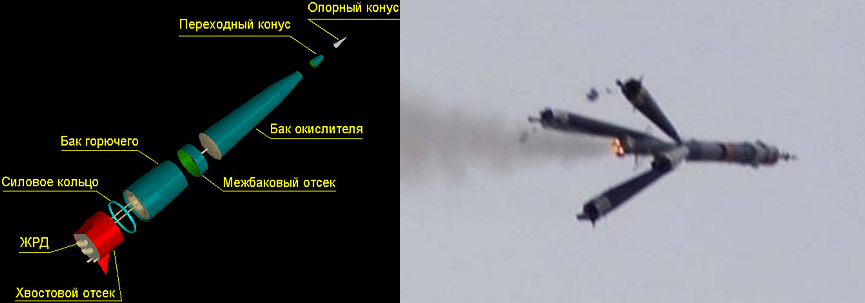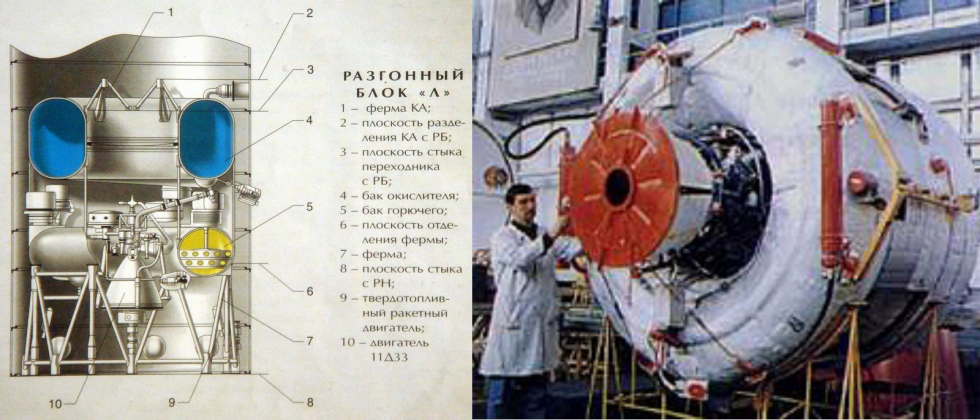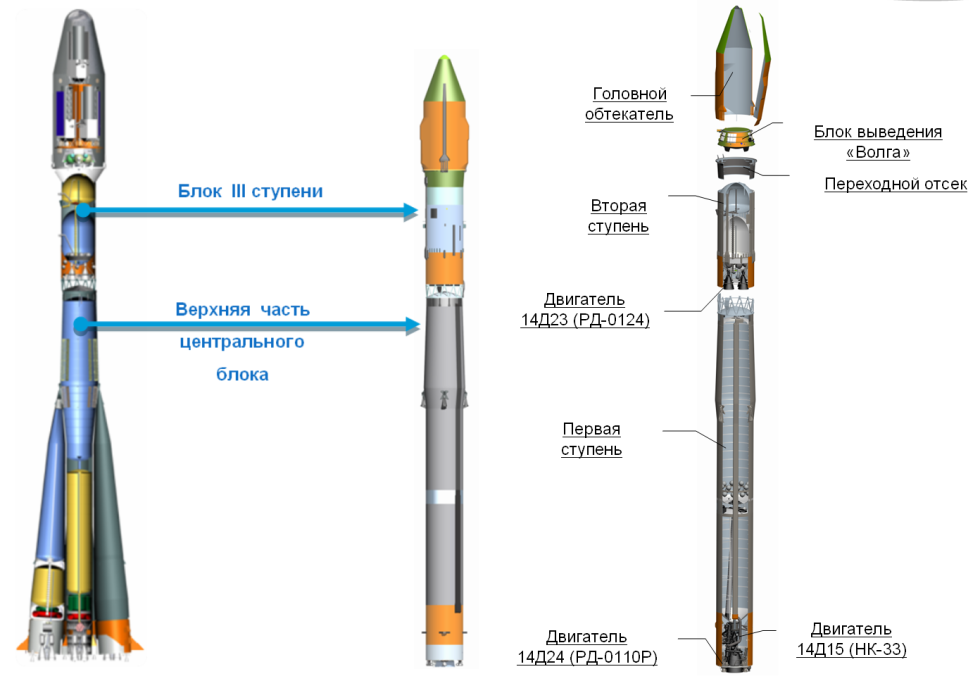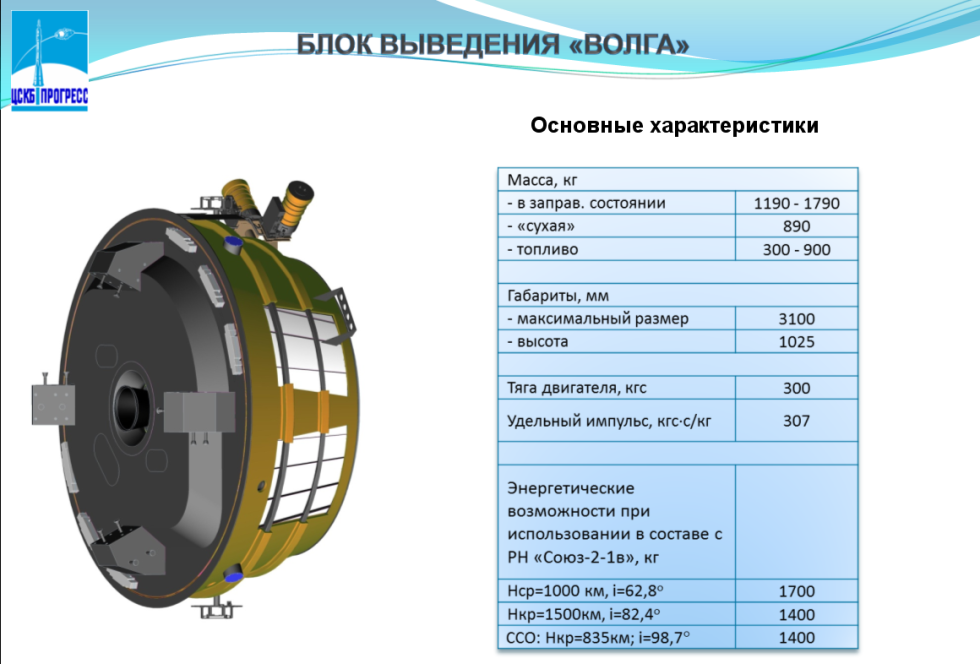The long life of the royal "seven": successful tests "Soyuz-2.1v"

The R-7 rocket had a surprisingly long life. Fifty-six years after the first launch, five launch complexes in the world are in operation and the sixth is being built. And today, at 16:30 Moscow time, the first test flight of a new model of the R-7 family, the Soyuz-2.1v, took place. I would like to tell you about the long and glorious history of the “Seven” and its new modification.
Khaki cradle
At the beginning of the twentieth century, scientists and enthusiasts were engaged in nuclear physics and built the first liquid-engine rocket. The catalyst of the Second World War gave birth to technologies implemented in metal — the nuclear bomb (Manhattan Project, USA) and ballistic missiles (V-2, Germany). The obvious benefits of their combination and the strain of the Cold War gave rise to intercontinental ballistic missiles, the first of which was the "R-7", created in the OKB-1 by Sergei Pavlovich Korolev.
The task of creating an ICBM required a breakthrough in the new, many decisions were taken a priori and determined the fate of the rocket:
- In 1953, the mass of the warhead with a thermonuclear warhead was taken equal to 5.5 tons according to the memorandum of Andrei Sakharov. Despite the fact that a month later, Sakharov found an opportunity to reduce the weight by half, the requirement of carrying capacity for the rocket men was kept. The rocket was too powerful for a battle, but it had a brilliant space future. Curiously, in the USA there was exactly the same situation when developing the Atlas ICBM. The Americans changed the requirements, redesigned the rocket (spending time, which would not hurt them in the space race), won in the military sense (the Atlas launch positions were simpler and cheaper, they were built many times more), but received very serious problems with launching into human space - the power of the ICBM as a launch vehicle was in short supply.
- It was impossible to get an intercontinental range in one step. And the engine could not guarantee the start of the engine in zero gravity after the separation of the first stage. I had to put the first step on the side. The launch complex turned out to be open, very large and very unsuitable for military use. The Americans had the same problems, and they solved them very peculiarly - the Atlas ICBM also launched all three engines at the start, and in flight dropped two of the three engines, along with part of the tail section.
- Radio control from ground points was used to control the flight of the rocket. It was the right decision for its time (in the US, nothing was better either). If the launching site was located at the Kapustin Yar training ground in the Astrakhan region, ground stations found themselves in the Caucasus mountains and could not give a reliable connection. I had to look for a new place, which was the area of the Tyura-Tam junction, for reasons of secrecy called “Baikonur”. Unfortunately, technical progress quickly made inertial navigation reasonably accurate and the need for radio correction disappeared, and the cosmodrome remained in difficult climatic conditions and, after the collapse of the USSR, in another state.
On May 15, 1957, the first launch took place (failure: side block fire, loss of stabilization, emergency shutdown of engines). The third launch on August 21 was successful for a rocket (the warhead collapsed as it entered the atmosphere). The international geophysical year was advancing, the United States repeatedly announced its intention to launch an artificial satellite of the Earth, so it was decided to use the ICBMs standing idle while waiting for them to be launch vehicles. And on October 4, 1957, the space era of humanity began.
R-7 as a designer

The first version of the "seven" had two stages - the central block "A" and four side blocks "B", "C", "G", "D".
')
Side blocks
Blocks “B” - “D” worked, depending on the modification, ~ 100-120 seconds and were reset. The separation of steps is implemented very nicely - after the destruction of the lower communication nodes, the tail section of the blocks moves to the side due to the last impulse of the engines, then the engines are turned off, and the blocks leave the upper power nodes simply due to their weight.

Central unit
Unit "A" works, depending on the modification, ~ 240-290 seconds. In the version of the ICBM for precise aiming, the engine was turned off in two stages - first, the marching cameras, the stage switched to the low thrust mode on the steering chambers, and when the required speed was reached, they were also turned off.

In the two-stage version, the R-7 could put about a ton into orbit. That was not enough, and the laws of ballistics said that a small third stage, working at the apogee, would seriously increase the payload of the rocket. The “E” block became such a third step, the rocket was named “Moon” and “East” and was used from 1958 to 1991.
Block "E"
With the third stage, the G-7 could already bring 4.5 tons to near-earth orbit or send a small apparatus to the Moon. On this version of the rocket, the first Lunas were launched, the first man of reconnaissance and national economic satellites.

A more powerful third stage could still increase the load capacity of the rocket. So the block "And" appeared:
Block "And"
The “And” block allowed ~ 7 tons to be put into orbit. The rockets under the names "Sunrise" and "Soyuz" launched a variety of different devices, "Soyuz" in the modifications "Soyuz-2", "Soyuz-FG" and "Soyuz-U" is still in use.

To launch heavier vehicles to the Moon and the Molniya communications satellites, which were launched into highly elliptical orbits, a fourth step was added - the “L” block.
Block "L"
The four-stage rocket carrier Molniya ensured the first soft landing of the machine gun on the Moon (Luna-9), the dispatch of vehicles to Mars / Venus and satellite broadcasting in the USSR.

If you want to see in more detail how this all works and flies, I recommend this article here - the P-7 family in Orbiter is excellent.
2.1v
After this review, we can explain the novelty of version 2.1c. First, the first step, from the side blocks “B” - “G”, is removed. Block "A" is being replaced with a new one, with a new engine (funny, it seems that it does not have a letter name yet). Block "And" remains, but instead of the third stage, it becomes the second. And the third step is put a new block launch "Volga" (optional). It turns out a light-class launch vehicle (~ 2.8 tons per 200 km, 1.4-1.7 tons per 800-1000 km or a sun-synchronous orbit with an injection unit), which can effectively replace the closed family of Cosmos and conversion "Dnepr", "Strela", "Rokot", which use the removed ICBMs.

Pay attention to the change in the geometric dimensions of the first stage. The NK-33 engine with a comparable mass has one and a half times more thrust than the RD-108, and does not have such outdated solutions as driving a turbopump unit from a separate tank with hydrogen peroxide. At the same time, compatibility with the existing launch structures is preserved - the same suspension units are used, for the lower part of the launch pad, minimal revision is required. If we talk about a more distant future, subsequent modifications are possible with the addition of geometrically more advanced (cylinder, not cone) side blocks with new engines and expected payloads of up to 15-17 tons.
Injection block "Volga"
This unit is designed to bring satellites into the required orbit if necessary. If the satellite does not have its own propulsion system (and this is true for a large number of satellites in low circular orbits), or the payload must be transferred to a solar-synchronous orbit (which is somewhat more complicated than the output to “normal” low near-earth orbits), the Volga "Able to place it in orbit with the required parameters and slow down to culturally burn in the atmosphere and not litter in space. The unit was designed not from scratch, but is the development of the propulsion system of the Yantar series photo reconnaissance satellites.

Here is a small diagram illustrating the need for an inference block:

Payload
Since the launch is a test, calibration spheres for missile attack warning radars are installed as payloads — simple polished metal balls and the small student satellite Stork, the doubler of which was launched into space in the spring along with the satellite Bion.
Conclusion
Despite the huge age of 56 by the standards of high-tech technical systems, the family of the seven-based missiles does not intend to go down in history. On the contrary, judging by the current situation, they will be exploited for another ten years at least.
Thanks for the materials:
- Artem Zharov for the presentation of TsSKB Progress . If you want to read more about the Union-2.1c - you here.
- Alexander Shlyadinsky for the drawings, a good third of the article taken from him.
- KIK-USSR website. Be sure to see the animation "jellyfish" .
- Site "Encyclopedia of the national cosmonautics."
- Samara military history club website.
UPD : There was a little video .
UPD2 : Start video appeared:
Source: https://habr.com/ru/post/206926/
All Articles